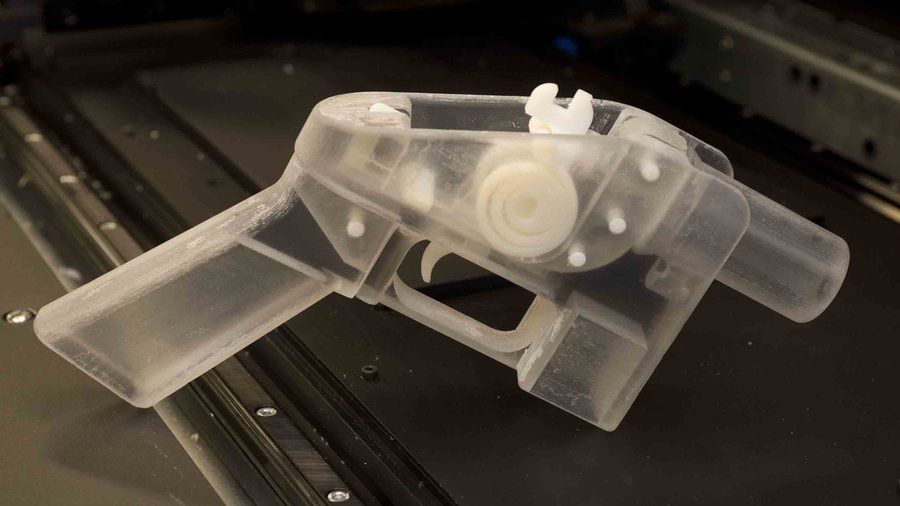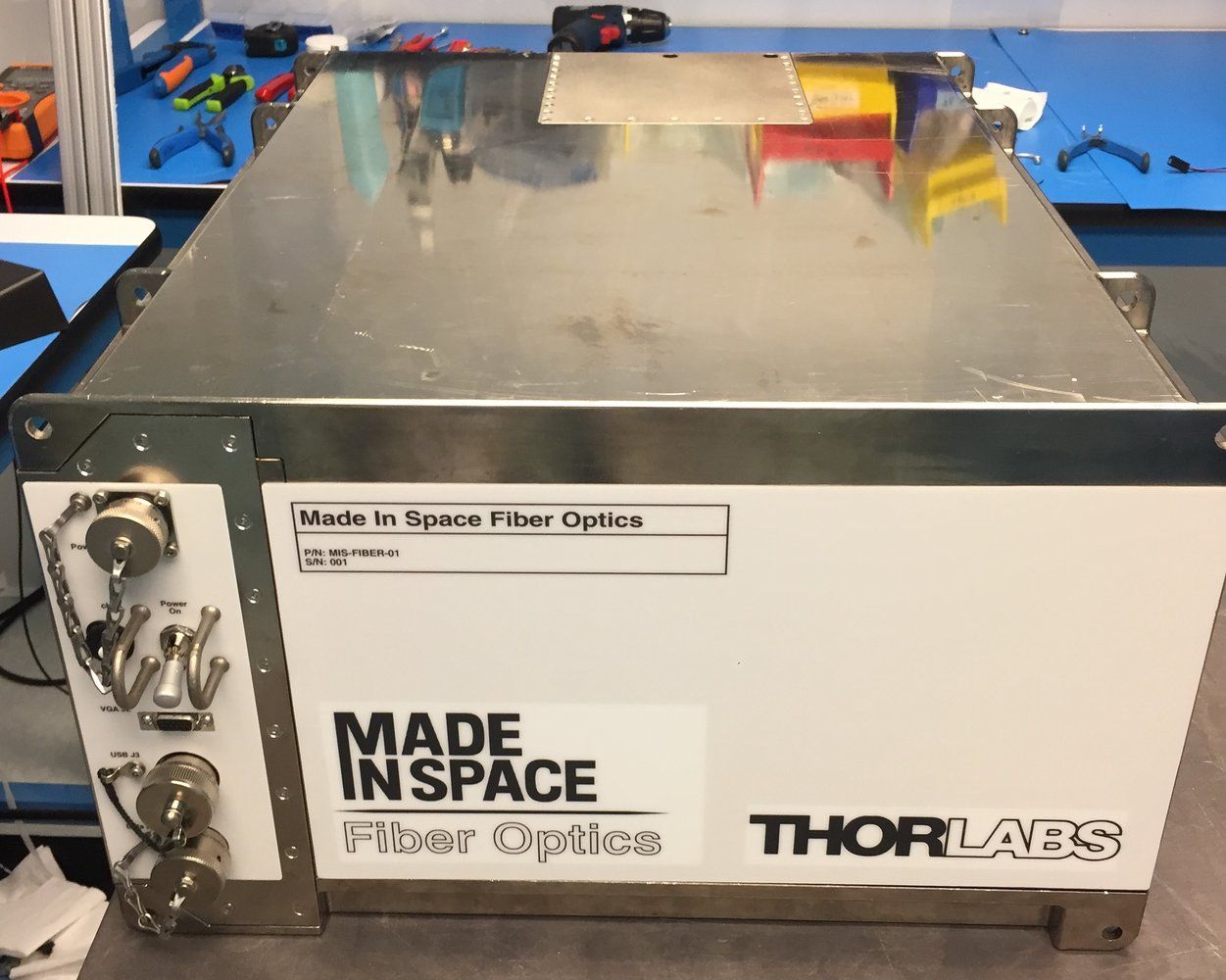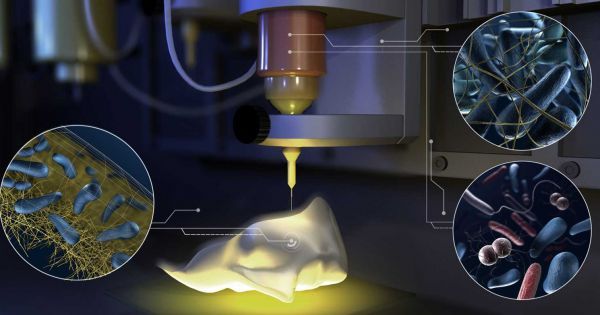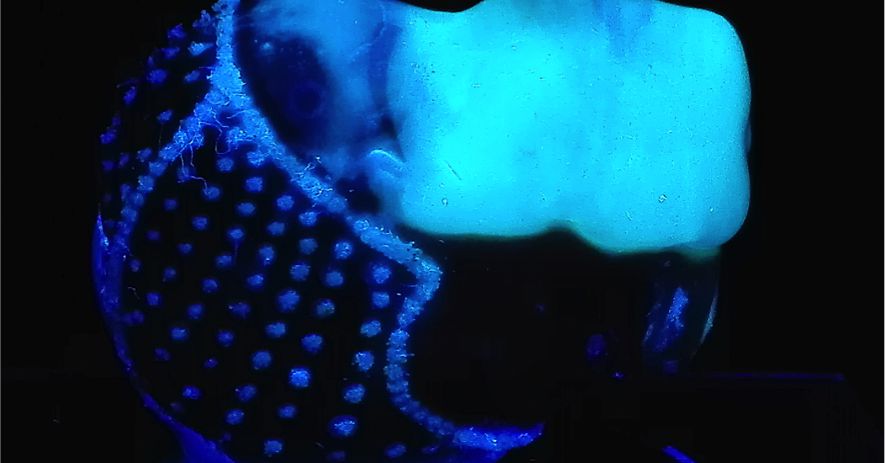Every time there’s a new technology, criminals immediately take advantage of it, explains Steven Kotler. It’s only a matter of time before they find new, nefarious uses for 3D printing and synthetic biology.



A bold plan to rev up off-Earth manufacturing is about to get a big test.
A small, privately built machine designed to make optical fiber is launching toward the International Space Station (ISS) aboard SpaceX’s Dragon cargo capsule tomorrow (Dec. 12).
If all goes according to plan, this little factory — which is owned by California-based startup Made In Space — will churn out stuff that’s good enough to sell here on Earth, opening up space to greater commercial use. [3D Printing: 10 Ways It Could Transform Space Travel].
Scientists have developed new 3D-printed plastic objects that can hook up to Wi-Fi without the aid of any electronics or batteries, meaning household devices could get a lot smarter in the future without the need for any circuitry.
If that’s not blowing your mind just yet, think about this: the tech could be used to make a laundry bottle that orders a refill online as soon as it runs out, or a simple volume slider that connects to your speakers without any cabling or even a power source.
So how is this possible? To achieve this, a team from the University of Washington built a system comprising a plastic switch, spring, gear, and antenna, which when activated with a press or other movement can absorb or reflect passing Wi-Fi signals in order to communicate.
A new method can now fabricate entire 3D shapes in seconds using holographic light fields. Fast digital manufacturing could have a big impact in the future.
Advances in regenerative medicine, particularly stem cells and 3D-bioprinted organs, could soon make heart transplantation an obsolete medical procedure.

3D printing has come a long way. In a new study, scientists explore the potential of using bacteria-laced ink to print living materials.
From pizza to urine-based space plastic and even blood vessels, it seems there’s no limit to what can be 3D printed. A new 3D printing platform, created by ETH researchers led by Professor André Studart, head of the Laboratory for Complex Materials, is advancing the process by working with living materials. The specially designed material is actually an ink infused with bacteria. The machine is then able to print living biochemical designs for a wide variety of purposes, which vary depending on the bacteria used. Their research has been published in Science Advances.
A team at MIT has genetically modified bacteria cells and developed a new 3D printing technique to create a “living tattoo” that can respond to a variety of stimuli.
Electronic tattoos and smart ink technologies are showing exciting potential for reframing how we think of wearable sensor devices. While many engineers are experimenting with a variety of responsive materials the MIT team wondered if live cells could be co-opted into a functional use.
The first step was to look at what organic cells could be utilized, and it turned out that the strong cell walls of bacteria were the best target for use as they could survive the force of a 3D printer’s nozzle. Bacteria also proved to be perfectly compatible with the hydrogels needed for accurate 3D printing.


The soft artificial heart was created from silicone using a 3D-printing, lost-wax casting technique; it weighs 390 grams and has a volume of 679 cm3. “It is a silicone monoblock with complex inner structure,” explains Cohrs. This artificial heart has a right and a left ventricle, just like a real human heart, though they are not separated by a septum but by an additional chamber. This chamber is in- and deflated by pressurized air and is required to pump fluid from the blood chambers, thus replacing the muscle contraction of the human heart.

MIT engineers have developed a new desktop 3D printer that performs up to 10 times faster than existing commercial counterparts. Whereas the most common printers may fabricate a few Lego-sized bricks in one hour, the new design can print similarly sized objects in just a few minutes.
The key to the team’s nimble design lies in the printer’s compact printhead, which incorporates two new, speed-enhancing components: a screw mechanism that feeds polymer material through a nozzle at high force; and a laser, built into the printhead, that rapidly heats and melts the material, enabling it to flow faster through the nozzle.
The team demonstrated its new design by printing various detailed, handheld 3D objects, including small eyeglasses frames, a bevel gear, and a miniature replica of the MIT dome—each, from start to finish, within several minutes.